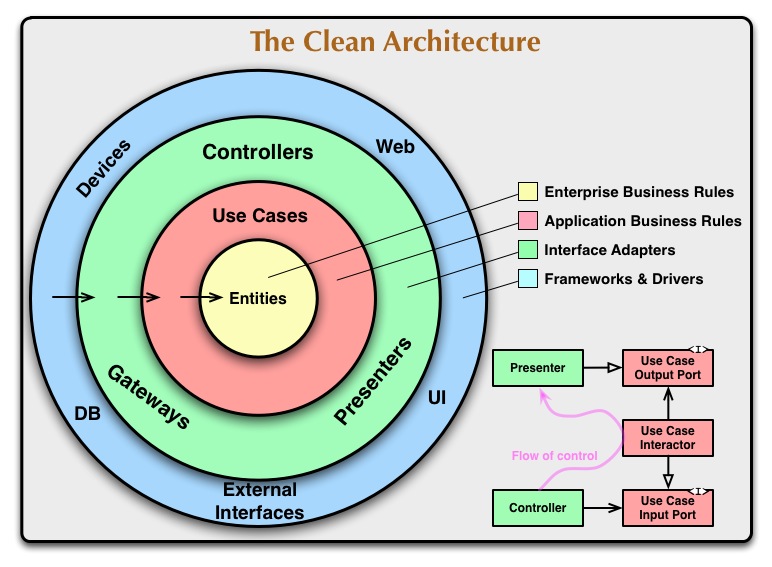Design principles play a crucial role in guiding the flow of components within software products, ultimately making them easier to maintain over the long term. This process can be visualized as reducing a complex, multidimensional graph into a simpler 2D representation, ideally forming a tree structure without cycles. Many new design principles often complicate concepts that have been around since the 1970s, that is Independence and Composition, which are foundational to modular design. These allow for easy swapping of components, much like breaking a branch from a tree along with its child branches, making room for a new branch to grow.
Understanding Independence in Software Design
Independence emphasizes treating each component in a software system as a separate entity. Here are the main points:
-
Black Box Concept: Each component operates as a "black box," meaning its internal workings are hidden from other components. This results in unrelated internals of components, leading to no interdependency. Only the inputs it accepts and the outputs it produces are visible and relevant.
- Loose Coupling: Minimizing dependencies between components ensures that changes in one component do not affect others. This enhances flexibility and maintainability, making it easier to manage large systems.
-
High Cohesion: Each component should have a single well-defined purpose, which makes it easier to understand and manage independently. High cohesion within components leads to better organization and clearer responsibilities.
-
Easy Swapping: Components can be replaced easily without modifying the entire system, as long as they adhere to the same input/output contracts. This allows for easier modifications.
The Power of Composition
Composition focuses on how independent components work together to create a cohesive system. Here are the key aspects:
-
Abstraction: Composition uses abstractions to define how independent modules interact, allowing them to function together smoothly. For instance, user management and content creation modules can communicate through defined interfaces, meaning they can exchange information without needing direct knowledge of each other's internal implementations.
-
Enhanced Organization: Composition creates a structured codebase where modules are logically connected. This organization simplifies navigation and understanding while hiding the complexities of lower-level implementations. Developers can focus on high-level functionality rather than getting bogged down by details.
-
Reusability: Composable components can be reused across different systems or projects, reducing redundancy and improving development efficiency. For example, a logging module developed for one application can be integrated into another project with minimal adjustments.
Can They Fit Common Design Principles?
DRY (Don't Repeat Yourself)
Composability avoids repetition by combining independent components, ensuring that functionality is implemented only once.
KISS (Keep It Simple, Stupid)
Independence ensures that components remain simple and focused on their single responsibility, while composability helps abstract away unnecessary complexity.
SOLID Principles
-
S: Single Responsibility Principle
Each component should have one reason to change. Independence ensures that each module handles a specific task, making it easier to update without affecting other components. For example, a logging module should only be responsible for logging. -
O: Open/Closed Principle
Components should be open for extension but closed for modification. Composition allows you to add new functionalities by creating new modules instead of altering existing ones. For instance, adding a new payment method can be achieved by composing a new payment module. -
L: Liskov Substitution Principle
Subtypes must be substitutable for their base types without altering the correctness of the program. While very specific to objects and unrelated to independence and composition, this can still be achieved via functions where parameter defines the associated properties and behaviour. So, instead of object we can substitute parameters. -
I: Interface Segregation Principle
Clients should not be forced to depend on interfaces they do not use. This principle encourages creating smaller, more focused interfaces. Composibility achieves the same goal naturally, by combining independent parts. -
D: Dependency Inversion Principle
High-level modules should depend on abstractions, not on low-level modules. Compositions in the layer between high and low level modules acts as the needed abstraction.
Deployment Architecture

Modular Monolith
A monolith barely has any constraints, allowing the application of both Independence and Composition principles, enabling a modular system where components are swappable at each level.
Compared to traditional monolithic architectures, modular monoliths facilitate an easier transition to microservices when necessary. Each module's independence means it can serve as a candidate for future microservices without significant rework.
Microservices
Similar to a modular monolith, this architecture utilizes APIs for interactions rather than direct function calls. This setup allows a team to work on and deploy their service independently while removing technology stack-related constraints.
Unless for a local-first product, the database management system (DBMS) should preferably be independent from the rest, even for monoliths. This independence facilitates the easy expansion of services from existing data and allows for independent auditing and changes according to future requirements.
Organizational Design
These are the guidelines for organizing the codebase. Let's explore the popular Clean Architecture.

Notice how different layers are represented in various colors, as you move from the outer levels toward the center, the degree of composition decreases while independence increases. Also, components that belongs to same layers are independent of each other. Other designs like Hexagonal and Onion architecture are also related to these concepts.
Conclusion
In the end, by maintaining a tree-like modular structure at each level, while balancing independence and composition, we create a system that is both resilient and flexible.
Should we follow the tradtion and name a new Architecture? How about The Tree Architecture?